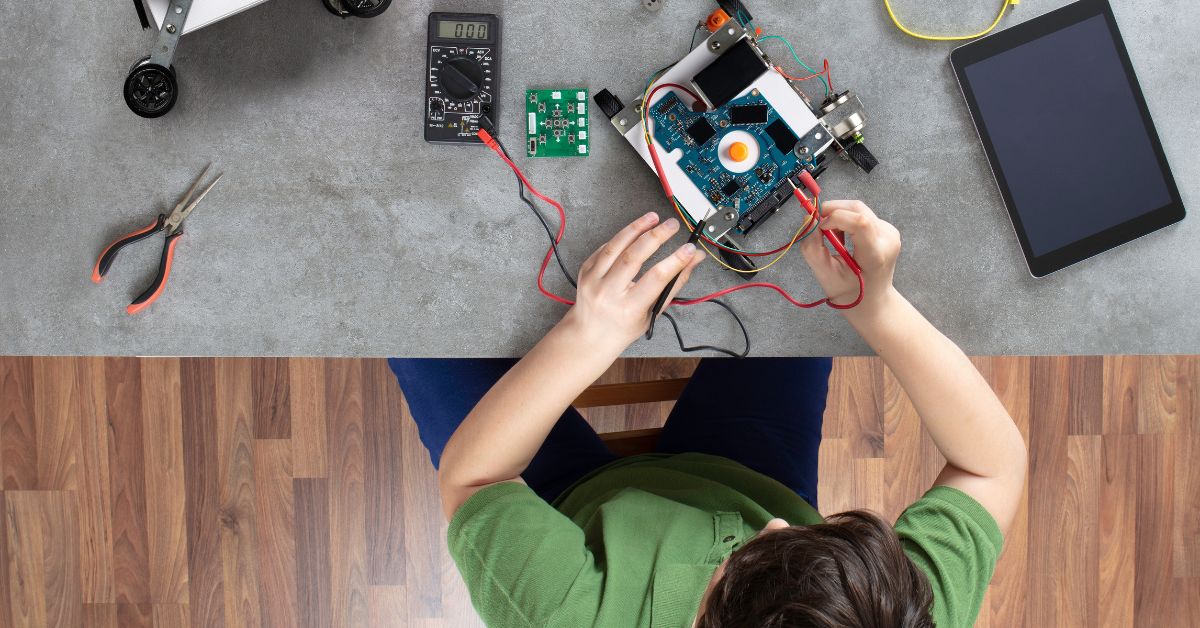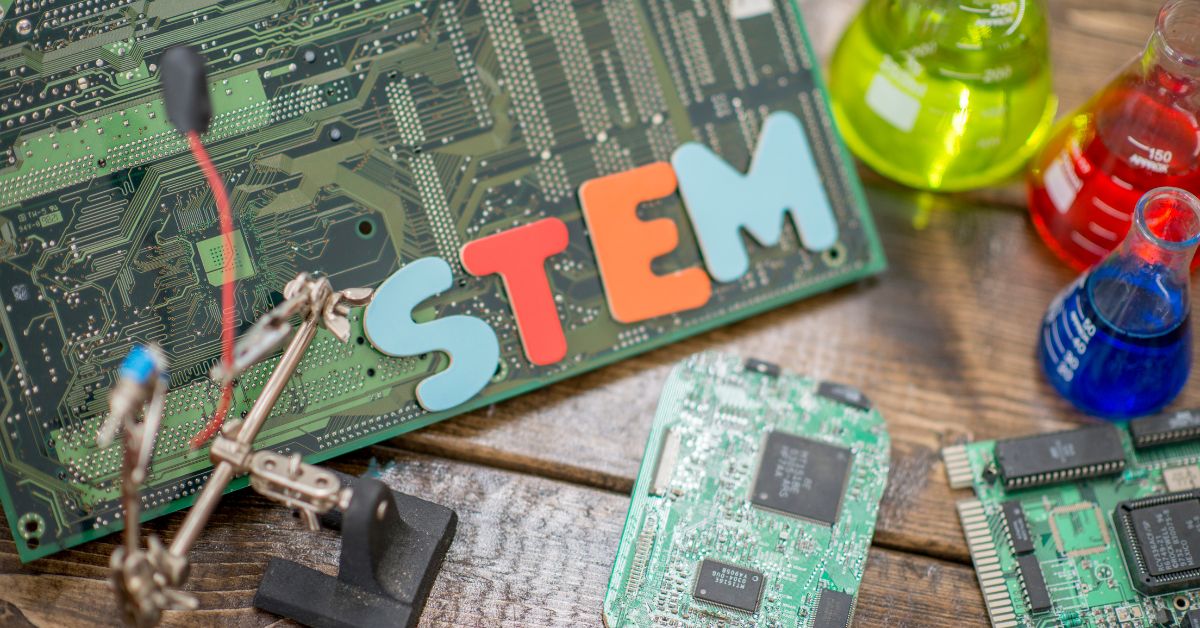In today’s rapidly evolving world, the importance of STEM—Science, Technology, Engineering, and Mathematics—cannot be overstated. These fields form the backbone of countless innovations and industries, making STEM education essential for preparing students for future challenges and opportunities. For parents, incorporating STEM activities into the homeschool curriculum can be a game-changer, offering unique opportunities to engage children in hands-on learning and real-world problem-solving.
Homeschooling provides flexibility and the freedom to tailor educational experiences to a child’s pace and interests. This makes it an ideal environment to integrate STEM activities naturally and seamlessly across different subjects. By doing so, homeschooling parents can create a rich, interdisciplinary learning experience that not only covers traditional academic bases but also ignites curiosity and passion for discovery. Through this blog post, we’ll explore the numerous benefits of integrating STEM across the curriculum, practical strategies for implementation, and how reading plays a pivotal role in supporting STEM education at home.
Benefits Of STEM Across The Curriculum
Incorporating STEM across the curriculum offers numerous advantages that extend beyond traditional educational boundaries. First and foremost, it significantly enhances critical thinking and problem-solving skills. When students engage in STEM activities, they learn to approach problems methodically, evaluate evidence, and develop solutions. This process encourages a mindset of inquiry and analysis, crucial competencies in both academic and real-world contexts. Furthermore, STEM education fosters improved literacy and numeracy skills. Engaging with STEM subjects requires students to interpret data, comprehend technical texts, and communicate their findings effectively.
These activities naturally enhance their reading and writing abilities while reinforcing mathematical concepts in an applied setting. By incorporating STEM into daily routines, homeschooling parents can help their children make meaningful connections between abstract concepts and practical applications, resulting in a well-rounded education.
Finally, integrating STEM across the curriculum prepares students for the future. With technology advancing at an unprecedented rate, STEM-related skills are in high demand. By nurturing these skills early on, homeschooling parents equip their children with the tools needed to thrive in a dynamic world. This educational approach not only opens doors to diverse career paths but also instills confidence and adaptability in learners, empowering them to pursue lifelong learning and innovation.
Practical Ways To Incorporate STEM In Homeschooling
Incorporating STEM into a homeschool curriculum can be both exciting and rewarding for parents and students alike. One effective strategy is to integrate STEM into daily routines and traditional subjects. For example, math lessons can be made more engaging by incorporating real-life scenarios where students apply mathematical concepts to solve problems. Similarly, homeschool science activities can be conducted using everyday household items, sparking curiosity and demonstrating scientific principles in action. Additionally, homeschooling parents can explore a wide range of engaging STEM activities tailored to different age groups. Younger children might enjoy building simple machines with LEGO bricks, while older students can experiment with coding through online platforms designed for beginners. By offering age-appropriate activities, parents can maintain their children’s interests and gradually increase the complexity of tasks as their skills develop.
Homeschooling parents can also leverage the power of technology to enhance STEM learning at home. There are numerous online resources, apps, and virtual labs available that facilitate interactive and immersive learning experiences. Virtual reality (VR) and augmented reality (AR) tools, for instance, can transport students to faraway places, allowing them to explore ecosystems, architecture, and more without leaving their homes. These technologies not only make learning fun but also offer unique perspectives and insights that traditional classroom settings might not provide. Moreover, collaborative projects can be a great way to integrate STEM into homeschooling.
Encouraging students to work together on group projects, either with siblings or through virtual partnerships with other homeschooling families, helps build teamwork and collaborative skills. Projects can range from creating a simple robot to tackling environmental challenges in a local community. Collaboration allows students to share ideas, learn from one another, and achieve more complex objectives than they might individually, all while reinforcing STEM principles and practices.

Finally, encouraging a growth mindset in children can significantly enhance their STEM learning journey. By teaching students to view challenges as opportunities for growth and learning, homeschooling parents can nurture resilience and persistence. Celebrating small victories and embracing failures as part of the learning process helps students develop a positive attitude toward STEM and learning in general. This mindset is crucial not only for mastering STEM subjects but also for thriving in an ever-evolving world filled with constant innovation and change.
To further enhance the learning experience, parents can create interdisciplinary projects that combine multiple STEM elements. For instance, designing and constructing a model bridge can involve engineering principles, mathematical calculations, and scientific experimentation. These projects encourage collaboration, creativity, and problem-solving, providing a comprehensive approach to learning that mirrors real-world challenges.
The Role Of Reading In A STEM-Integrated Curriculum
While STEM subjects often involve hands-on activities and technical exploration, reading remains a crucial component of a well-rounded education. Reading enhances comprehension, vocabulary, and critical thinking skills, all of which are essential for success in STEM fields. By incorporating reading materials that support STEM learning, homeschooling parents can reinforce their children’s understanding of complex concepts and foster a deeper appreciation for the subjects. There are numerous resources available that cater to different age groups and interests. For younger children, picture books that introduce scientific concepts and technological wonders can be both entertaining and educational. For older students, biographies of influential scientists, engineers, and mathematicians offer inspiration and valuable insights into the world of STEM.
Additionally, parents can encourage students to explore non-fiction texts related to current scientific discoveries, technological advancements, and engineering marvels. Reading such materials broadens their horizons and helps them connect classroom learning to real-world applications, fostering a lifelong passion for exploration and innovation. Incorporating fiction into a STEM-integrated curriculum also holds value. Well-crafted science fiction novels can ignite a student’s imagination, prompting them to think creatively about the possibilities of future technologies and advancements. These stories not only entertain but also challenge students to consider ethical implications, societal impacts, and the boundaries of scientific exploration.
Discussions following such readings can deepen understanding and lead to thought-provoking debates, encouraging students to articulate their perspectives and refine their critical thinking skills.
Furthermore, reading and writing go hand in hand. Encouraging students to articulate their thoughts through writing allows them to process information more thoroughly and express their understanding of STEM subjects. Creative writing assignments that ask students to invent and describe new technologies or scientific concepts enhance their ability to convey complex ideas clearly and effectively. This practice strengthens communication skills, an essential competence in any field, particularly in STEM, where collaboration and information sharing are crucial.
Ultimately, blending reading and writing with STEM education creates a holistic learning experience. By broadening the scope beyond mere technical skills, homeschooling parents can nurture well-rounded individuals who are prepared to tackle the multifaceted challenges of the future. This integrated approach not only cultivates a passion for learning but also equips students with the skills and mindset necessary to thrive in a rapidly evolving world.
The Benefits Of STEM Are Far-Reaching
Incorporating STEM activities across the curriculum offers homeschooling parents a powerful tool to cultivate curiosity, critical thinking, and problem-solving skills in their children. By seamlessly blending STEM into daily routines and traditional subjects, parents can create an engaging and flexible learning environment that adapts to their children’s unique needs and interests. The benefits of a STEM-integrated curriculum are far-reaching, enhancing literacy, numeracy, and future preparedness. By encouraging students to explore interdisciplinary projects and providing access to quality reading materials, parents can nurture well-rounded learners who are equipped for the challenges and opportunities of tomorrow. We invite homeschooling parents to explore the exciting world of STEM activities and consider incorporating them into their teaching strategies. By doing so, they can provide their children with a holistic and enriching educational experience that fosters a lifelong love of learning and innovation. For those interested in deepening their understanding of STEM integration, numerous resources and communities are available to support this rewarding educational journey.





